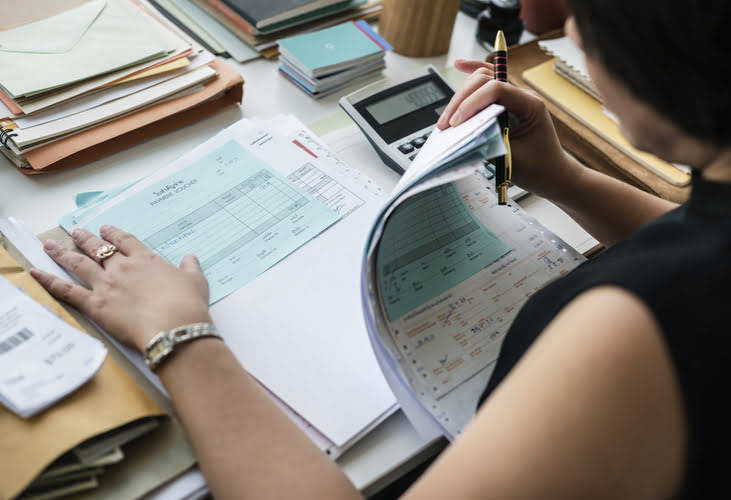
This is your opportunity to group and analyze sections of financial data that are most relevant to your success. Within these classifications, you then assign particular accounts that correlate with the type of asset, liability, equity, or investment. However, if such funds are considered to offset maturing debt that has properly been set up as a current liability, they may be included within the current asset classification. The two liabilities classifications are current liabilities and non-current liabilities.

Equity
- A classified balance sheet is like a big box that holds information about what a company owns and owes, all sorted into neat groups.
- A classified balance sheet has liability, asset, and equity sections in subcategories for ease in usability.
- Most people are using this information to prepare financial statements, which provide a snapshot of the company’s financial health.
- Each classification is organized in a format that can be easily understood by a reader.
- The three main sections of a classified balance sheet makes are assets, liabilities, and equity.
- Assets and liabilities that are considered off-balance sheet (OBS) assets and liabilities will not appear on a classified balance sheet.
This includes things like “common stock,” which is money people gave the company to own a small part of it, and “additional paid-in capital,” which is extra money investors paid over the basic price of their shares. The classified balance sheet is presented in a vertical format, typically listing assets first, followed by liabilities and equity. The different categories in a classified balance sheet help provide more readily available information What is bookkeeping concerning the business’s performance, as opposed to the more general categories in an unclassified balance sheet. For example, rather than including one “assets” category, a classified balance sheet may break down assets into current and fixed assets.
What is Efficiency Ratios? Guide with Examples
- The characterizations utilized will change according to the kind of business you own, and there is no single method for designing a format of a classified balance sheet appropriately.
- In the intricate world of financial reporting and analysis, the balance sheet stands as a fundamental statement, providing a snapshot of a company’s financial position at a specific point in time.
- A building, on the other hand, is considered a non-current asset because it will provide benefits to the company for many future years.
- Cash, for example, is considered a current asset because it can be used within the next year.
- The main criterion for an asset to be classified as non-current is its expected useful life—assets that provide economic benefits over a period longer than one year are considered non-current.
Current liabilities are those due within a year, such as accounts payable and wages payable. For instance, if your small business has $10,000 in accounts payable and a $15,000 five-year loan, you would report $10,000 as a current liability and the $15,000 loan as a non-current liability. Overall, a classified balance sheet serves as a vital tool in financial reporting and analysis, providing valuable insights into the financial health and stability of a company.
The Most Popular Accounting & Finance Topics:
- A balance sheet provides a snapshot of a company’s financial position at a given point in time.
- By understanding the breakdown of current and non-current assets and liabilities, they can better plan for the company’s financial needs and growth opportunities.
- The uniqueness of classified balance sheets lies in their detailed categorization of a company’s assets and liabilities, which provides a richer, more insightful analysis of its financial health.
- This includes accounts payable (bills the company needs to pay), and other short-term debts.
- The second group is “long-term assets,” which are things the business will keep for more than one year, like a big machine or a patent for a new invention.
The classified balance sheet is more detailed and useful for financial analysis, while the unclassified/standard balance sheet is simpler and might be used for smaller businesses or less detailed reporting. It’s important for users of a classified balance sheet to be aware of these limitations and to use the balance sheet as just one tool in their overall analysis of a company’s financial health. At its core, a classified balance sheet is an enhanced version of a standard balance sheet, with a deeper level of organization and clarity. It groups or ‘classifies’ assets, liabilities, and equity into several subcategories, making it easier for stakeholders to analyze and interpret the data. The classified balance sheet provides a clearer snapshot of the company’s financial structure compared to a standard balance sheet, allowing for detailed analysis.


It organizes assets and liabilities into distinct categories based on their nature and liquidity. This classification allows for easier analysis and better decision-making by giving stakeholders a clearer view of a company’s short-term and long-term financial position. A balance sheet summarizes a company’s financial position as of a certain date, typically at classified balance sheet the end of a fiscal quarter or year.
- Management utilizes classified balance sheets for cash flow planning, capital allocation, and long-term strategic decisions.
- Long-term assets are resources held for over a year like buildings, equipment, and long-term investments.
- Understanding the method of preparation of this kind of balance sheet is important.
- An unclassified balance sheet does not have sub-totals, clearly defined categories, and accompanying notes.
- Liabilities are obligations that the company owes to external parties, typically involving the payment of money, goods, or services in the future.
- At the point when that is finished, you’ll need to add each one of the subtotals to show up at your asset total, which is $98200.

It represents the residual claim on the company’s assets after deducting liabilities. The fluctuation in equity reflects the profitability, dividend payment, share issuances, share buybacks, and other transactions affecting shareholders’ ownership interests. Beyond the par value of common stock, additional paid-in capital represents the excess amount that shareholders have paid over the nominal value of the shares at the time of issuance. This component reflects the premium that investors are willing to pay for the company’s stock, based on their confidence in its future growth and profitability. Fixed Assets are those long-term assets that are used in the current financial year as well as many years further. They are one-time strategic investments that are required https://www.bookstime.com/ for the long-term survival of the business.
Leave a Reply